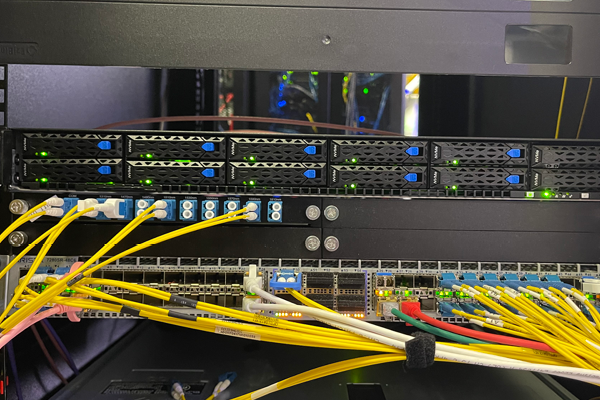The Telecommunications Industry Ombudsman (TIO) closed consultation for its 5-year independent review on 15 May. The consultation was primarily focused on its ability to meet the Australian ‘benchmarks for Industry Based Customer Dispute Resolution’, as well as other issues including its revised terms of reference, governance and authorising environment and engagement and outreach activities. In preparation for our submission, IAA’s policy team consulted with various industry representatives. The feedback we received from our members has highlighted concerns with the TIO’s management of consumer complaints, which seems to point to inherent issues with TIO’s cost structure and complaints escalation model.
We establish from the outset that IAA recognises the value of the TIO and the fundamental role it plays in the industry. The TIO is an industry-based ombudsman with the charter to provide an independent and external dispute resolution service, giving consumers an avenue to raise complaints about their telecommunications provider, free of charge. Carriers and eligible carriage service providers are required by legislation to join the TIO scheme.
The TIO reported it received 301,396 complaints in 2020-21. It is proud to announce that 90% of these were resolved at the referral stage. The ‘referral’ stage is the lowest level of complaints handling where the TIO allows the provider to directly resolve a customer complaint. If the dispute is unresolved at this stage, it will be escalated to the ‘agreement’ level where the complaint is handled through dispute resolution methods such as conciliation, and investigation. In cases where the consumer and provider cannot come to an agreement, the next stage involves the complaint being resolved by a preliminary view or decisions by the TIO.
However, it should be noted that providers face greater costs as the complaints are escalated to higher levels. This has often resulted in cases where a provider will concede and provide the complainant with some compensation, even when the provider is not at fault. Some of our members have reported instances where even the TIO has acknowledged that the customer is in the wrong, but has advised the provider to give the customer some compensation anyway, as the costs for escalating the dispute to the next stage will be higher than the compensation amount. This points to inherent problems with the costs and complaints handling structure through which the TIO operates.
Another issue that became glaring is that the TIO is often failing to follow its own terms of reference. Clause 2.20 of the TIO’s terms of reference provide that the TIO “…will only consider a complaint after the member has had a reasonable opportunity to consider the issues.” However, while resources promoting the TIO and their complaints webpages note that customers must first directly contact the provider, there is no mention that they must also give the provider an opportunity to consider the issue or respond. Even the TIO’s online complaint submission form does not include the requirement of allowing the provider an opportunity to consider the complaint directly, without the involvement of the TIO.
A joint submission by consumer advocacy groups has also highlighted inefficiencies with the TIO’s complaints handling mechanisms. Making 19 recommendations to improve the operation of the TIO, some of these points seem to be harmonious with the concerns raised by industry.
For example, the joint submission calls for a differentiation to be made between simple complaints that can be resolved in a substantially shorter period (5 working days instead of 10). However, as noted in IAA’s submission, a large number of the complaints resolved via referral are disputes which should not have been dealt with by the TIO at all. If the requirement that a provider is given a genuine opportunity to respond is adhered to, the TIO would likely see a significant drop in dispute cases, resulting in a much more efficient process for everyone involved.
Recommendation 3 of the joint submission also outlines that the TIO should ensure its intake processes thoroughly assess the root cause of the complaint. This is a concern similarly raised by industry where it seems the TIO often fails to understand the underlying cause of the problem. In our submission, we raised the TIO’s lack of knowledgeable triage which has resulted in a large number of complaints being raised against the incorrect provider. This has especially been the case where retail providers are being blamed for issues that lie with the wholesale providers.
The coalition of consumer representative bodies has also called for an expansion of the TIO’s public reporting. Industry has similarly called for greater transparency and in-depth reporting. IAA noted the lack of clarity in the TIO’s 2020-21 Annual Report, particularly in relation to the TIO’s costs and revenue allocation. Given the overall decrease in the number of complaints made from previous periods to 2020-21, the increase in costs and expenses of the TIO in this same period should be explained.
However, it is worth noting that the data requested by the consumer advocacy groups include the technology types, geographical location, and the TIO members involved in the complaints. While IAA supports the call for greater transparency and detail in the TIO’s reporting in general, we disagree that the providers involved in TIO complaints should be publicised. Especially under current circumstances where it seems providers are being involved in disputes that either should not be dealt with by the TIO or concerns other providers entirely, this sort of ‘name and shame’ tactic seems particularly unfair.
IAA, our members, and the telco industry recognise the value of an industry ombudsman. We acknowledge its necessity for the functioning of a healthy and thriving sector and wish to see consumers having an appropriate and effective mechanism through which they can bring genuine complaints. However, it is clear there are inherent issues that require some major improvements if the Telecommunications Industry Ombudsman is going to succeed in this role.
Read IAA’s full submission.










